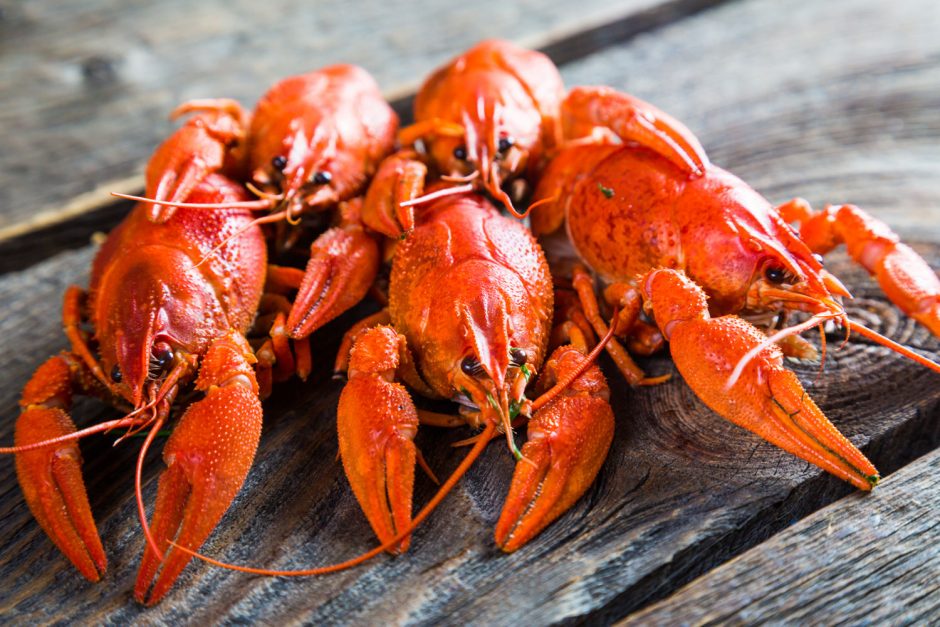Perth has quite a lot going for it. It’s sunny and warm 85% of the time, you’re always near a beach, the wine and food are great and there are quokkas just off the coast!
It also has the good fortune of having Perth Canyon, a massive underwater trench, about 15km off the coast. Perth Canyon was carved out over millions of years by the Swan River when the continental shelf was above sea level. It occupies an area of 2,900km2 and reaches depths of 4000m. It contains the world’s largest plunge pool—a depression in the canyon that is 2km long, 6km across, and 300m deep.
So why is a giant underwater canyon such a benefit I hear you ask? Well, the sudden drop in depth and rocky bottom make for perfect conditions for Australian rock lobsters. While these lobsters are often generically called cray, they’re actually a little different. Lobsters and Crayfish have claws for crushing and eating their prey, while rock lobsters have developed other ways to defend themselves, such as sharp thorns all over their body and two horns on their head. When threatened rock lobsters produce a loud defence screech by rubbing one of their long antennae against a soft part of their carapace. They eat small animals like snails, clams, crabs, small shells and sea urchins and will scavenge for dead sea life as well.
The scavenging element in their diet is where cray pots come in.
The basic design of a cray pot hasn’t changed for thousands of years. It’s essentially a large wooden cage with a funnel at the top and a bait container next to the funnel. The idea is the rock lobster, attracted by the bait and trying to get at it, crawl into the wide end of the funnel and into the pot. The narrow end of the funnel then makes it hard for the crustacean to get back out.
With recreational fishing licenses priced at $60 in and around Perth, if you’ve got a boat, cray potting becomes a cost-effective way to gain access to one of Australia’s most valuable kinds of seafood. And with 8 rock lobsters of size being allowed to be taken home per license, with a bit of luck you can have yourself a veritable feast!
At least, that’s what happened when Asian Inspirations went out to check some pots with Jeff, Jacquinta and Nathan, 3 locals from Shoalwater, about 40 mins south of Perth. Nathan is a recovery diver for the Australian Navy’s Submarine Service, and Jeff is a former Army dentist now retired. Jacquinta is a Pilates instructor and Physio by trade.
Heading out on a relatively still day – at least by Western Australian standards – with Nathan expertly navigating across what chop there was, we headed out about 15 km offshore to the first of the GPS marked. The pots are anchored dropped onto the bottom of the ocean attached to a pair of foam flotation buoys, and the line is weighted with small clip-on weights. There is always a bit of natural drift, so we circled for a couple of minutes before locating the first pot.
Using the boat hook, yours truly managed to snag the rope and drag it on board. Nathan then attached it to the winch and Jeff fed the lineup and into the boat as the little mechanical beauty hauled the pot up from the depths.
With the pot now secured on the side of the boat, it was time to check the haul. And it wasn’t too shabby! A total of 15 rock lobster were in the pot, and only 3 were undersized and thrown back in. After emptying the pot and measuring the cray to make sure they’re legal. Nathan holds the cray and Jacquinta snips the middle fin on the tail of the cray to indicate it’s not for commercial sale.
Then, the pot is rebaited – in this case with frozen pilchard and pig fat – and returned to the bottom of the ocean to ensnare another load of unwitting rock lobster, The freshly caught lobster are transferred to an aquarium type storage device filled with seawater at the back of the boat.
With 3 licensees on board and only 12 crustaceans stowed, we still had up to 12 more lobster to catch before we reached our limit. So it was on to the second and final pot.
Nathan had placed this one a few kilometres farther out to sea, a little deeper and away from most of the other cray pots. And boy was it a good idea.
Upon hauling the pot up onto the boat, we discovered a veritable bounty of delicious rock lobster. 25 were sardined in next to each other! The storage box was almost overflowing as the lobster was emptied into it before being measured.
A total of 4 more crays were released for being undersized, while 7 more were put back into the pot for retrieval the next day.
With that, we turned around and headed back to shore, with your brave writer getting thoroughly drenched by the spray on the return trip. From there, the catch was divided up amongst the 3 able fishermen and promises of barbecues and beers were made.
Oh and one last thing, the lobster was absolutely delicious!
If you’ve been lobster/cray or crab potting and have a great story, let us know!







You must be logged in to post a comment.